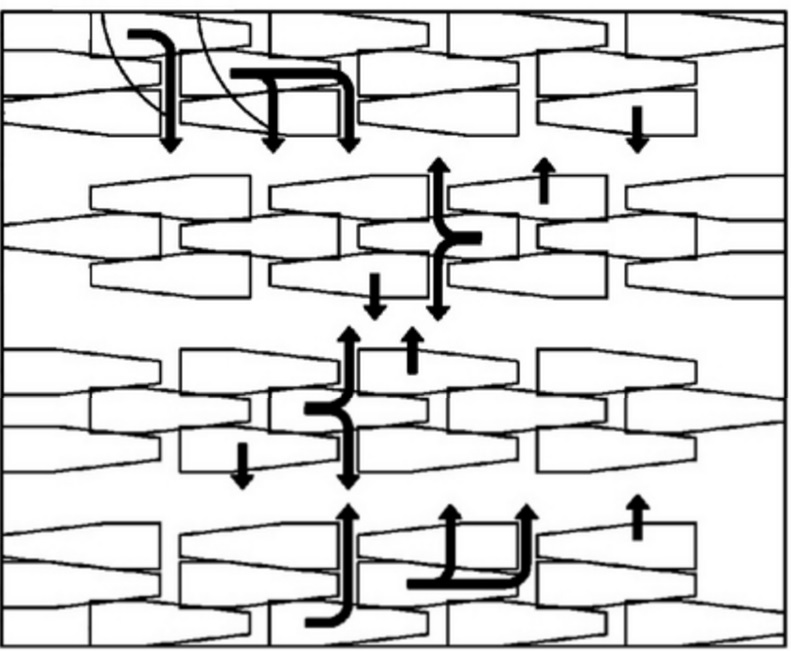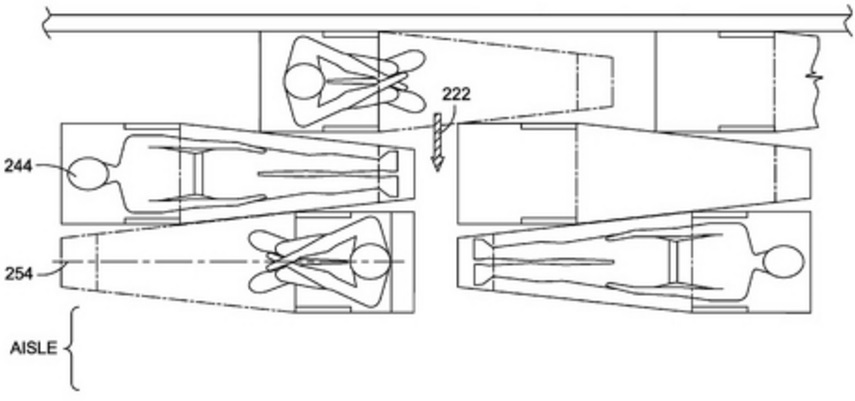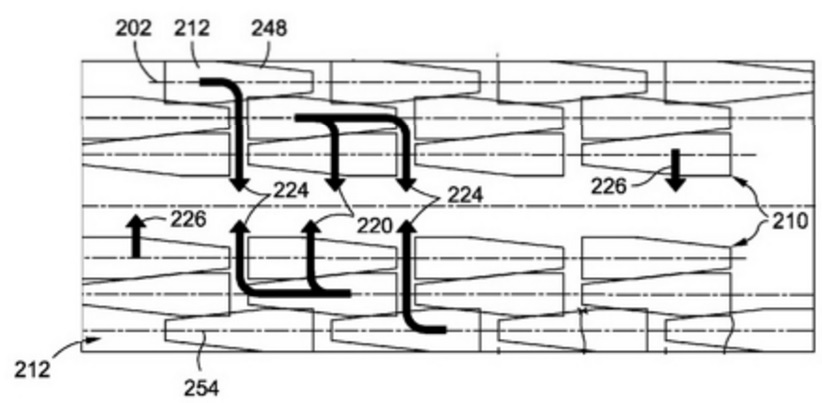Australian Business Traveller finds a Boeing patent published November 19 for 12-across business class seating in 3-3-3-3 configuration.
The basic kinds of seats you’ll find are:
- Recliner. There are fewer and fewer of these, it’s what I ‘grew up on’ with United (their first flat seat was introduced in 2006). These are like big easy chairs with more recline than coach and usually foot rests but they don’t turn into beds and don’t go flat.
- Angled flat. Once revolutionary, Singapore Airlines called their seat the Spacebed. The idea is that the seat straights out fully, but it isn’t parallel to the floor. The seat is at an angle, taking up less space. They’re not great for sleeping, and became known as a ‘wedgie seat’ because you might slip down as the seat slopes downward. Plus, most of them weren’t really flat anyway.
- Flat bed. These aren’t just fully flat, but parallel to the ground, a flat surface you can sleep on.

Singapore Airlines Boeing 777 Business Class Cabin
The world standard has become the flat bed. British Airways was an early pioneer, though their product has stagnated. Even late-adopters like Air France are moving away from their angled seats and putting in flat beds. United, American, and Delta are pretty much flat for their long haul business class.
Of course, not all flat beds are equal.
- Do they offer all-aisle access, or does a passenger in the window seat have to climb over the one in the aisle to get out? That’s not very private, and it’s inconvenient when the person in the aisle is sleeping.
- How much privacy? Even a four-across business class where every seat has aisle access comes in multiple varieties. One common configuration operated by Delta and by Jet Airways is the ‘herringbone’ format that’s not very privacy. I much prefer ‘reverse herringbone’ where seats are angled away from each other which creates greater privacy.
I ‘grew up’ as a business traveler with United’s 7-across recliner seats on the Boeing 777. Generally an airline can improve business class without giving up too many seats by going ‘angled flat’. But passengers far prefer a fully flat seat.

Cathay Pacific 1-2-1 All Aisle Access Business Class Seating
Going fully flat, all aisle access is what the world’s best business class products offer. But going 4-across on a Boeing 777 to accomplish it gives up a lot of real estate and requires earning a revenue premium.

EVA Air Reverse Herringbone Fully Flat Business Class Seat
Some airlines go fully flat, six-across, like United. Others try to squeeze in 7, or angle the 6-across seats to pack more into the cabin. That makes sense on routes where business class can’t attract as much revenue, or where there’s little competition.
Premium business markets aren’t likely to go 12-across as a standard, though one imagines that a boutique airline business model could try it. A La Compagnie-style carrier might fit more seats in while offering flat seating, for instance.
Boeing’s drawing for 12-across flat business class seating requires three aisles.

And it requires passengers to contort themselves to get in and out of the seats.

They’ve even come up with a version of the dense seating for a single aisle aircraft, to offer three-by-three flat seats in a Boeing 737.

Companies patent concepts all the time, most of which never go into production. I doubt we’ll see 12-across flat beds in business or six-across flat beds on 737s. But Boeing shows that it is, at least, possible to accomplish.


If the price is reasonable, the seat is lie flat and comfortable, and one can truly get in and out without crawling over someone then it might just work. I’ll never buy business class tickets for something like United’s 8 seat wide config. It has to be something where I can get in/out (or someone else can without disturbing me)
The business class seats on JAL provide solutions to all of these problems, while making efficient use of space. The Boeing design appears to have taken the JAL design and kicked it up another notch (probably one notch too far). I believe the JAL concept is the future of business class.
Looks like coffins on the drawing!
What Pat said: all-aisle, dense business class seating is here. Etihad has a similar configuration to JAL, but they squeeze ~1 one more seat in (8 across in both their 2-class 77Ws and on the upper deck A380s), but with just enough stagger for exit.
That said, I see the business class product bifurcating: BA, Etihad, JAL, UA are going for high-density, high number of seats: basically an economy seat with a *bit* more privacy and a flat bed, while AA, CX, etc. are going for fewer seats but with large comfortable reverse herringbone configurations. Obviously, the latter are better, but is it worth the higher fares and lower upgrade chances?
(Yeah, I know that AA/BA have a JV, but e.g. when there’s only 28 J seats on AA 788s, the lowest fare buckets are going to fill up real fast.)
Sure, compared to the reverse herringbone 4-across seating, this sounds pretty bad. I would have no problem in such a seat, though. I am guessing it might get a little bit snug in the shoulders, but otherwise I think with aisle access and a staggered configuration this would be perfectly comfortable for my needs. I’d definitely fly it without hesitation
Weird. Why not go with forward-backward-forward triplets, like “ΛVΛ”?
I’d much rather have this than the wedge.
Just like a sardine and all for the price of a business class ticket-the way to go!